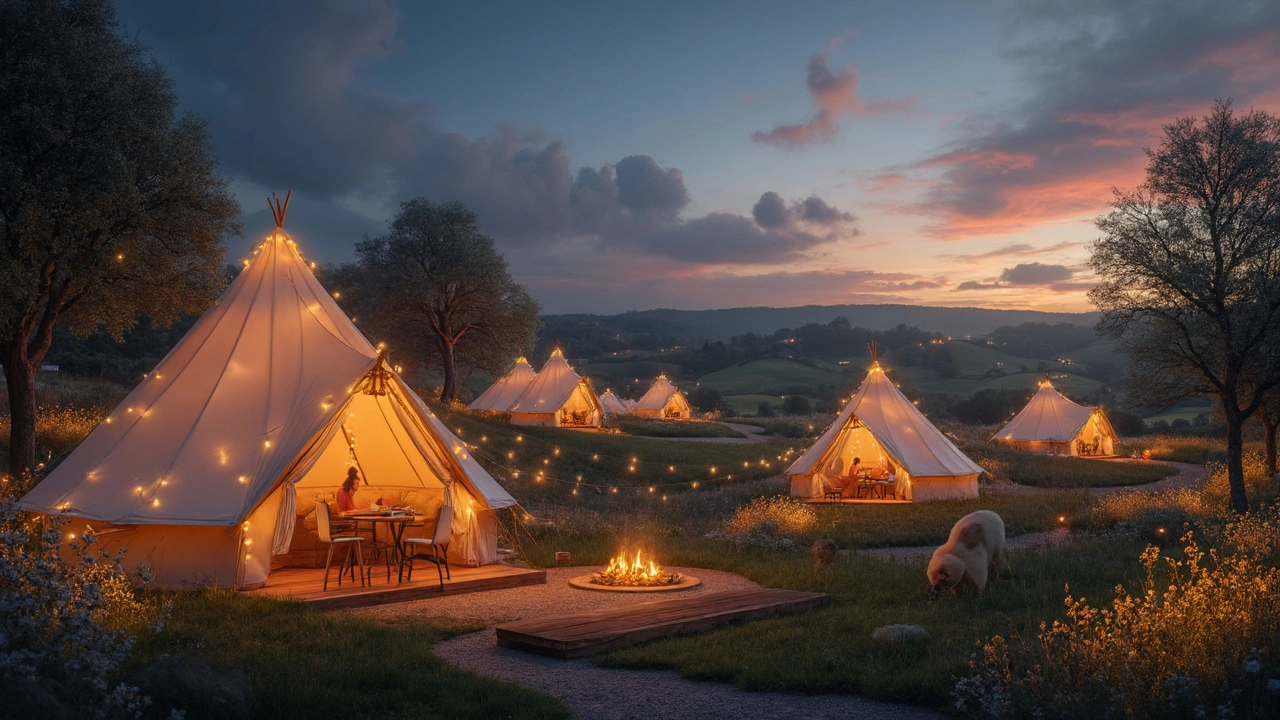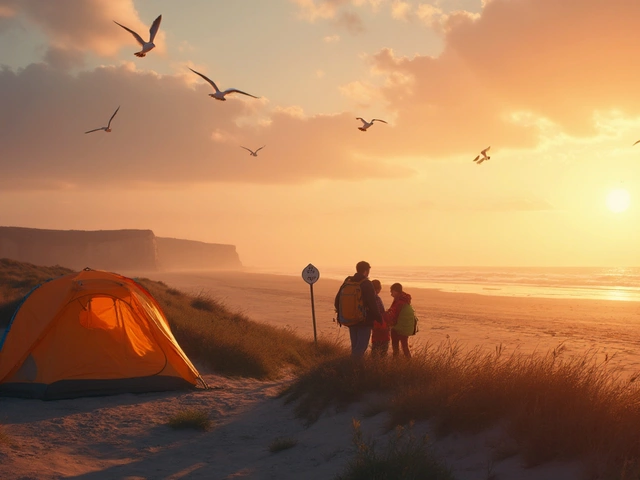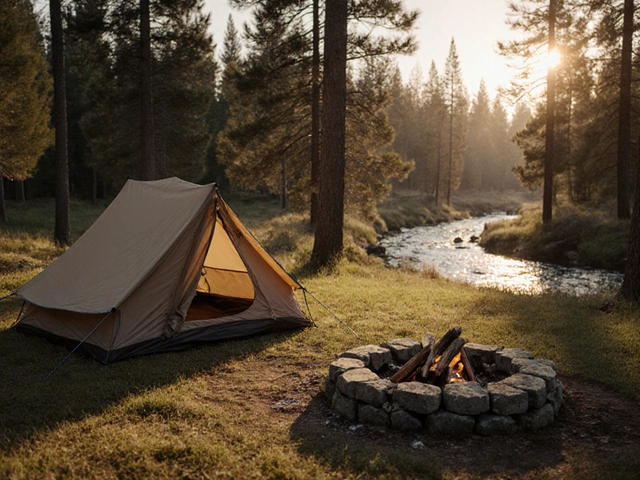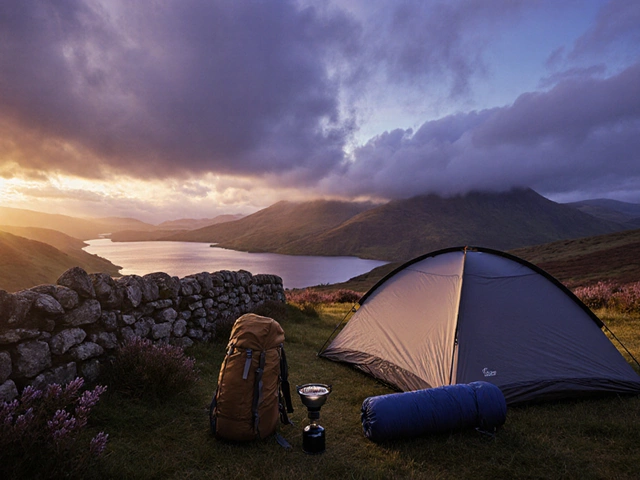So, can glamping sites really make you a tidy profit, or will they just drain your bank account? Let's dive right in. For starters, glamping combines 'glamorous' touches with the old school camping experience. Think of it as nature with a side of comfort and luxury. No surprise it’s caught on like wildfire, right?
Setting up a glamping site sounds thrilling but let’s talk money first. Sure, you're not building a three-star hotel, but these fancy tents and pods aren't cheap. You’re looking at initial costs for unique structures, furnishings, and amenities. And don’t forget the land itself – location matters, big time.
- Understanding Glamping Appeal
- Initial Setup and Costs
- Revenue Streams and Pricing
- Challenges and Sustainability
Understanding Glamping Appeal
What's so special about glamping anyway? Imagine this – the great outdoors without sacrificing comfort. It's a perfect escape from the everyday while holding onto a few luxuries like comfortable beds, electricity, and even Wi-Fi. Who wouldn't want a bit of that?
Today’s travelers crave more than just a simple camping trip. They want experiences. Glamping provides a unique mix of adventure and comfort that traditional camping usually lacks. Forget about struggling with tent poles. Instead, enjoy a pre-pitched setup with cozy interiors.
Why Tourists Love It
First off, glamping hits a sweet spot in the tourism sector. From millennials wanting Instagram-worthy adventures to families looking for an easy getaway, there’s something for everyone. Plus, as more people long for eco-friendly vacations, glamping sites often follow sustainable practices that appeal to green-conscious travelers.
Experience Matters
And let’s not forget the personal touch. Many glamping sites offer personalized services and activities, like guided hikes or wine-tasting sessions. This builds a story or memory around the stay, leaving guests with more than just a hotel receipt. Who knew 'roughing it' could be so chic?
The big question is: will the trend last? With the demand showing no signs of slowing down, it seems glamping is here to stay, at least for now. If you're eyeing the profitable nature of this business, it's clear why people are falling head over heels for this concept.
Initial Setup and Costs
Diving into the world of glamping isn't just about that Instagram-worthy tent under the stars—there’s a lot more under the hood. Understanding the real costs involved in setting up a site can make or break your business idea.
Land and Location
The first decision is where to plop down your site. This isn't just about scenic views; it's about access, zoning, and getting the right permits. Rural plots might be cheaper, but you'll need solid infrastructure. Land prices vary widely, but think somewhere between $5,000 to $50,000 per acre, depending on the location.
Accommodation Costs
The heart of any glamping site is, of course, where your guests sleep. Options range from safari tents to yurts, vintage campers, and even treehouses. A basic canvas tent might cost you around $500, while a luxury version could set you back $5,000 or more. And that's per unit—multiply by however many you need.
Utilities and Infrastructure
Got the perfect land and tents? Great. But guests expect at least a warm shower and a flushable toilet. Incorporating basic utilities like water, electricity, and waste management isn't exactly cheap. Solar power might save you bucks long-term but requires upfront investment. Plumbing for one unit can exceed $10,000, depending on how remote the site is.
Decor and Amenities
Think beyond a simple bed. Today’s glamping enthusiasts crave a plush mattress, cozy throws, bespoke coffee makers, and handcrafted furniture. Interior setup might easily tack on another $2,000 to $3,000 per unit. But, trust me, these details are what justify the higher rental prices.
With the right planning, these initial costs could translate into an immersive experience that attracts paying customers. It's all about smart choices—doing the homework now can save headaches (and wallets) later.
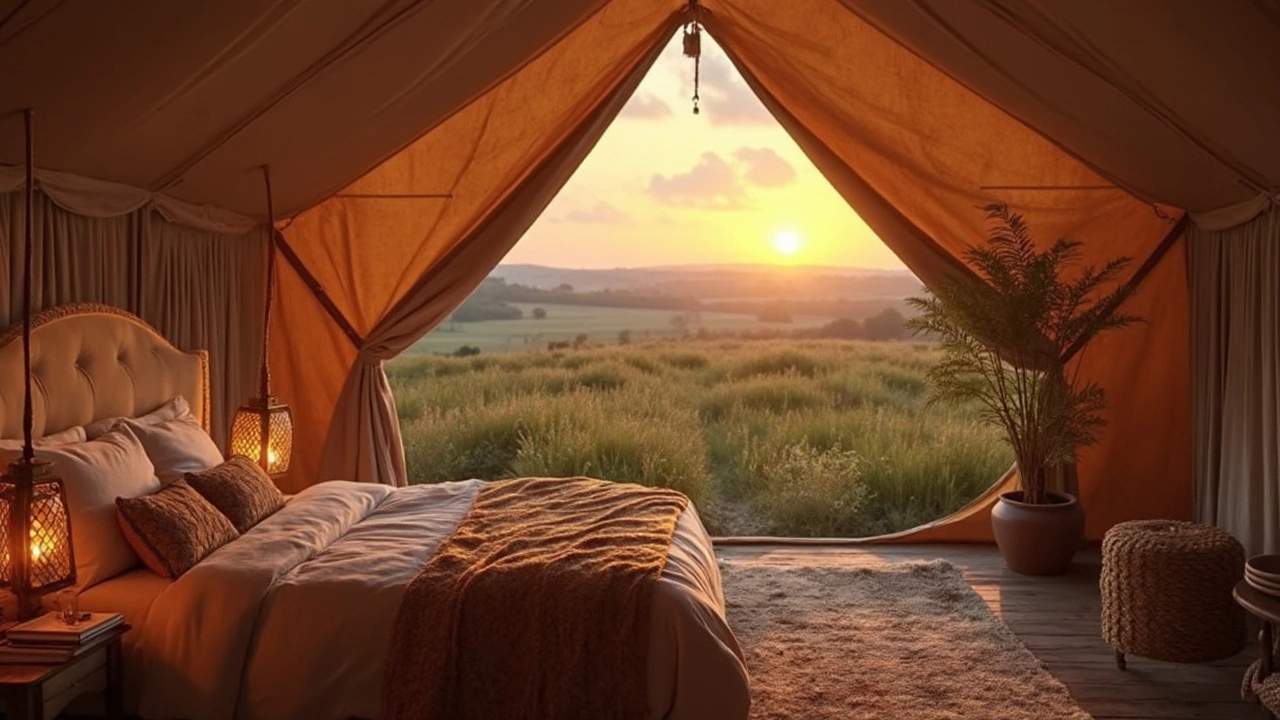
Revenue Streams and Pricing
Alright, let’s talk dollars and sense. If you’re considering starting a glamping site, understanding how to make money is crucial. It’s not just about pitching a tent in the woods and calling it a day.
Base Pricing
The first thing to nail down is your base pricing. This can vary massively depending on your location, amenities, and the level of luxury offered. A quick glance at the market shows prices anywhere from $100 to over $500 per night. Of course, the higher end usually comes with spectacular views or plush amenities.
Additional Offerings
Want to boost those margins? Throw in some extra services. Guests often love the option of breakfast delivered to their tent or guided nature tours. Offer packages that include yoga, massages, or local excursions. This adds to their experience and your paycheck.
Seasonal Rates
Don’t forget to adjust for peak seasons. Like any travel accommodation, glamping sites might ramp up the prices during summer or holiday seasons. Offering discounts or packages during off-peak times can also keep the income steady.
Special Events
Ever thought about hosting events? Weddings, corporate retreats, or even wellness retreats can be incredibly lucrative. You might need to invest a bit in facilities to cater to larger groups, but the return can be well worth it.
Sample Revenue Breakdown
Check this out: a simple breakdown to visualize potential earnings from different streams.
| Revenue Source | Potential Monthly Income ($) |
|---|---|
| Nightly Stays | 10,000 |
| Food and Beverages | 2,500 |
| Guided Tours | 1,500 |
| Special Events | 5,000 |
Glamping can indeed be a golden goose if you play your cards right with pricing and versatile offerings.
Challenges and Sustainability
Running a glamping site ain't always a walk in the park. Sure, it's tempting to get swept up in the excitement of outdoor luxury, but there are hurdles you’ll face along the way.
Environmental Impact and Regulations
To start, nature is your biggest asset and your biggest responsibility. Balancing eco-friendliness with guest comfort can be tricky. Local regulations can be strict on environmental practices, and you might find yourself jumping through hoops to meet them. Not to mention ensuring your site stays pristine for future tourism.
Seasonality Struggles
If you think you've tackled everything by setting up, think again. Glamping is often a seasonal business. This means when the weather turns, so do your bookings. You’ll need a plan to keep income flowing even in the off-season.
Management and Maintenance
While it might seem like you can just set it and forget it, maintaining those luxury tents and facilities is ongoing work. Everything from cleanliness to repairs requires attention, and a poorly maintained site won’t bring in guests or profit.
Sustainability and Innovation
Sustainability isn't just a buzzword. Guests are becoming eco-conscious, expecting sustainable practices as part of their experience. This involves everything from using renewable energy sources to sustainable waste management systems.
Take a look at this basic sustainability table some successful glamping sites follow:
| Practice | Description |
|---|---|
| Solar Power | Using solar panels for electricity. |
| Water Conservation | Install low-flow fixtures and rainwater collection. |
| Waste Management | Composting and recycling initiatives. |
So, while owning a glamping site can be a fulfilling business, it demands dedication and strategic thinking to be both profitable and sustainable.
